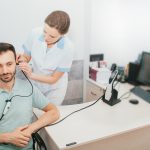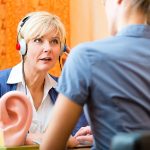Hearing and balance are two interconnected aspects of our sensory perception that often go unnoticed until they are disrupted. As an audiologist, my mission is to shed light on the latest advancements in hearing loss prevention, diagnosis, and management, with a particular focus on the critical role of vestibular testing. This article aims to serve as a valuable resource for patients and professionals alike by exploring recent research, futuristic interventions, and the importance of early detection.
The Link Between Hearing and Balance
Before delving into the advancements in hearing and balance, it’s crucial to understand the intrinsic relationship between these two sensory systems. The inner ear, a delicate structure located within the temporal bone, houses both the cochlea (responsible for hearing) and the vestibular system (responsible for balance). These interconnected systems work together seamlessly to provide us with a comprehensive perception of the world around us.
Advancements in Hearing Loss Prevention
Prevention is always the best approach when it comes to hearing loss. In recent years, researchers have made significant strides in understanding the various factors that contribute to hearing loss and, consequently, developing preventive measures. Noise-induced hearing loss (NIHL) is a major concern, and new technologies are emerging to protect our ears.
Custom Hearing Protection:
Audiologists now offer custom-made hearing protection devices tailored to an individual’s needs and lifestyle. These devices not only protect against harmful noise but also preserve the quality of sound in a way that conventional earplugs cannot.
Hearing Conservation Programs:
Many workplaces and industries are implementing comprehensive hearing conservation programs. These programs educate employees on the importance of hearing protection and provide regular hearing assessments to monitor any changes in hearing health.
Smartphone Apps for Noise Monitoring:
Innovative smartphone apps enable users to monitor ambient noise levels, offering real-time feedback on potential risks to hearing health. This empowers individuals to make informed decisions about their exposure to noise.
Early Detection and Diagnosis
Early detection of hearing loss is crucial for effective management and intervention. Audiologists have access to cutting-edge diagnostic tools and techniques that allow for more accurate and timely assessments.
Vestibular Testing:
Vestibular testing, which assesses the function of the inner ear’s balance system, has advanced significantly. Video Head Impulse Testing (vHIT) and Vestibular Evoked Myogenic Potentials (VEMPs) are two techniques that provide valuable insights into vestibular function. These tests help identify issues like benign paroxysmal positional vertigo (BPPV) and Meniere’s disease early on, allowing for prompt treatment.
Otoacoustic Emissions (OAEs):
OAEs are sensitive tests that can detect hearing loss in infants and children who may not yet be able to communicate their hearing difficulties. This early detection enables early intervention and can have a profound impact on language development and overall quality of life.
Futuristic Interventions
The future of hearing health holds promising innovations that may revolutionize the way we address hearing loss.
Cochlear Implants:
While cochlear implants are not new, ongoing research is focused on improving their performance and expanding their indications. Future cochlear implants may offer better sound quality, compatibility with various electronic devices, and improved speech recognition.
Gene Therapy:
Research in the field of genetics is paving the way for gene therapy to treat certain types of hereditary hearing loss. Scientists are exploring ways to repair or replace faulty genes responsible for hearing loss, potentially offering a cure in the future.
Inner Ear Regeneration:
Regenerating damaged hair cells within the inner ear is a tantalizing prospect. Stem cell research and tissue engineering are showing promise in developing treatments to restore hearing in cases of sensorineural hearing loss.
Compassion and Support
Amidst these advancements, it is essential to remember the emotional and psychological impact of hearing loss. Patients often experience feelings of isolation, frustration, and anxiety. As hearing professionals, our role extends beyond diagnosis and treatment; we must provide compassionate support and counseling to help patients navigate the challenges they face.
Communication Strategies:
Audiologists can equip patients with effective communication strategies, including lip-reading, sign language, and auditory training, to improve their quality of life.
Hearing Aid Counseling:
Counseling plays a pivotal role in hearing aid adoption and acceptance. Patient-centered care involves addressing concerns, setting realistic expectations, and providing ongoing support to optimize hearing aid use.
Support Groups:
Encouraging patients to connect with support groups and communities of individuals with hearing loss can be immensely beneficial. These groups offer emotional support and practical advice for coping with hearing loss.
The world of audiology is evolving rapidly, with groundbreaking advancements in hearing loss prevention, diagnosis, and management. Vestibular testing has become more sophisticated, early detection is more accessible than ever, and futuristic interventions offer hope for those with hearing loss. However, amidst these scientific achievements, let us not forget the importance of compassion and support in helping individuals navigate the challenges of hearing loss. As hearing professionals, our commitment to improving the lives of those we serve remains unwavering, and together, we can usher in a future where hearing loss is a challenge that can be overcome.






